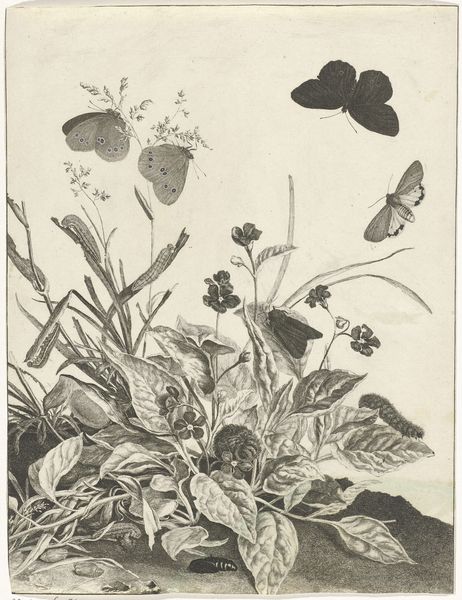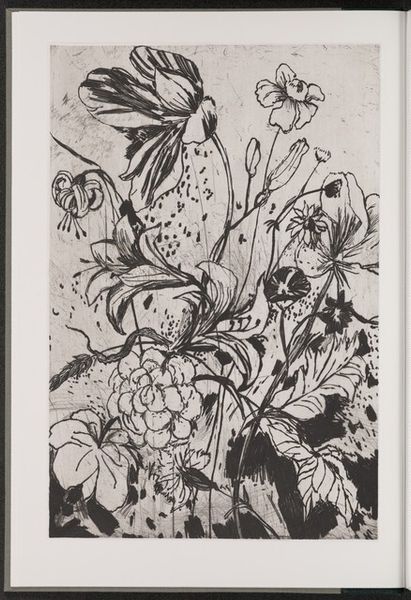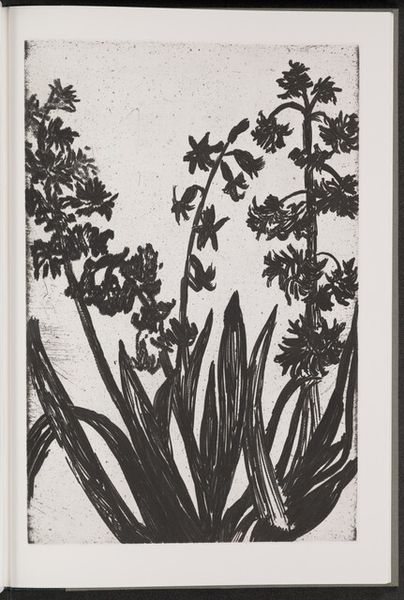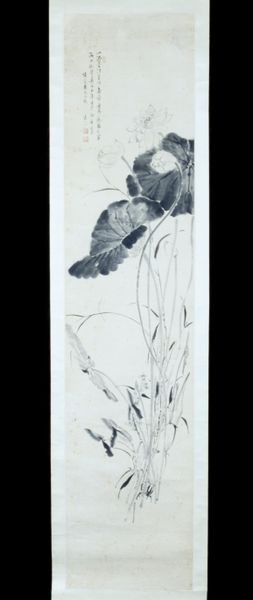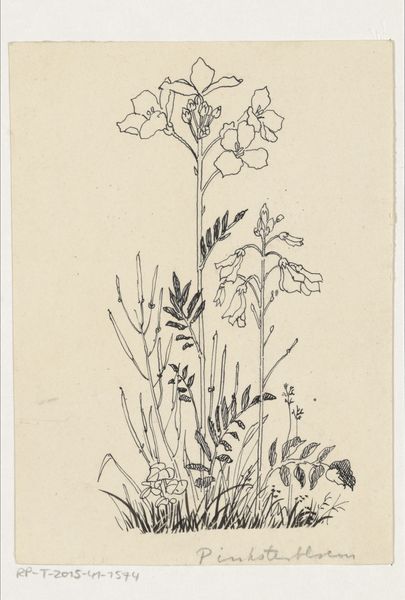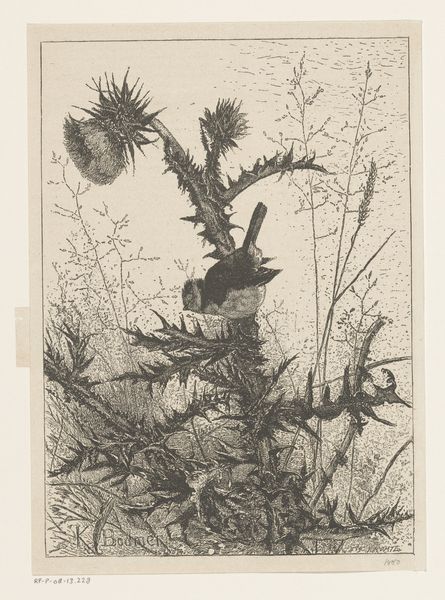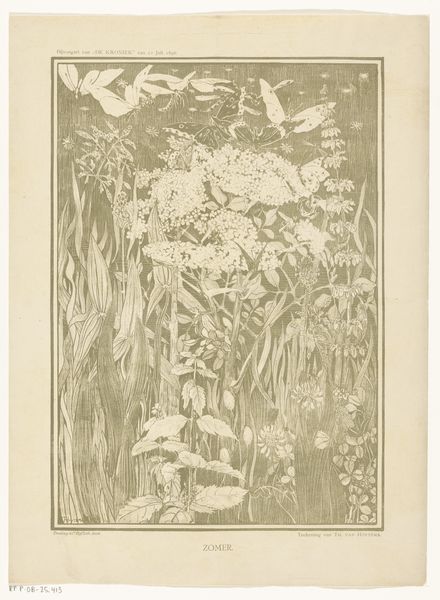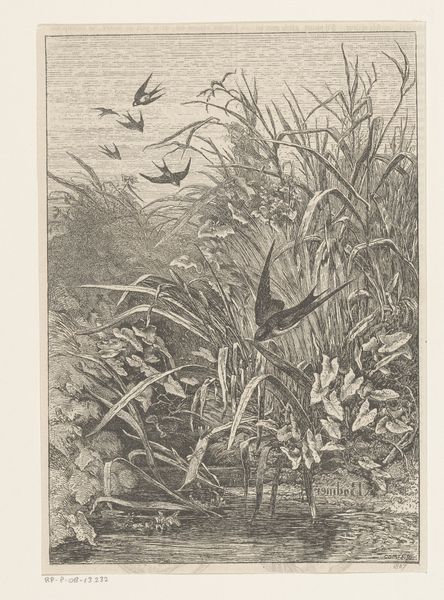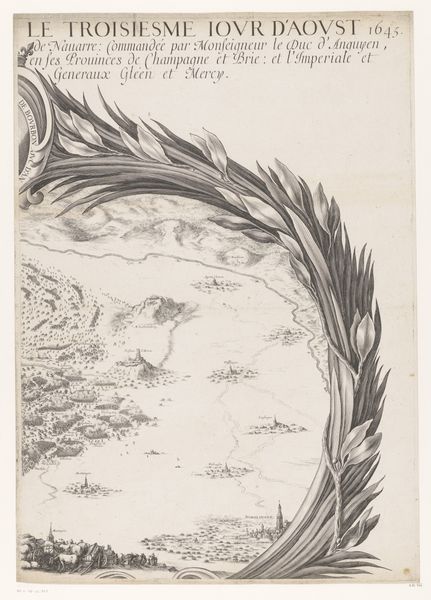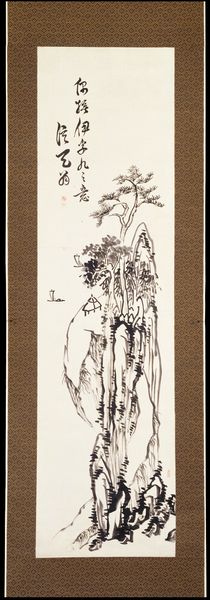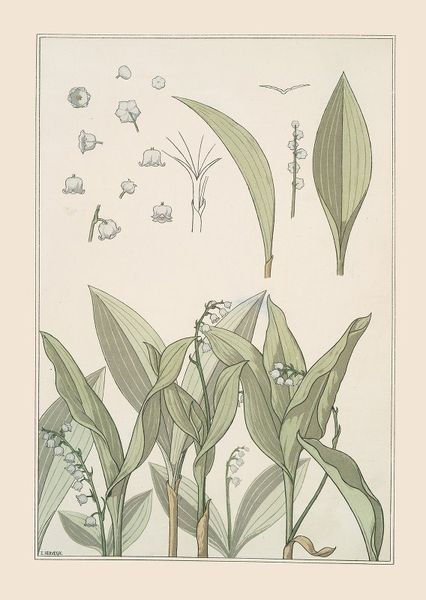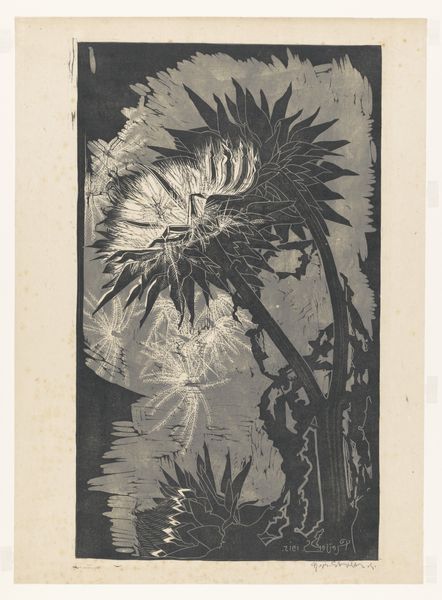
Dimensions: height 251 mm, width 219 mm
Copyright: Rijks Museum: Open Domain
Curator: What strikes me immediately about this piece is its almost musical quality—the lines seem to sing, especially the delicate rendering of the reeds and the stylized flight of the bird. Editor: Indeed, there's a striking rhythm to it. This drawing, made with pen and ink sometime before 1930 by Henri Verstijnen, depicts "Vliegende vogel bij een waterkant," or "Flying Bird by a Waterside". It's such a wonderful example of the Art Nouveau sensibility. Curator: Absolutely. The bird becomes a symbol, almost a hieroglyph for freedom or escape, doesn't it? And that single flower floating in the pond—like an offering, a sort of echo of purity in a natural landscape that is full of hidden things, the symbolic load is really evocative. Editor: What I find compelling is how Verstijnen manages to evoke a sense of depth and space using such limited means, you can see it is rendered almost exclusively in black and white, which would certainly shape the art's public reception when it first emerged on the scene. It's so reliant on lines and patterns that almost mimic natural, recognizable landmarks like reeds, foliage, water—though there are fantastical elements added in, to be sure. Curator: Agreed. The Art Nouveau elements allow a distinct voice from Verstijnen. We find the expected echoes of the symbolist movement; however, Verstijnen communicates through graphic clarity and a touch of fantasy. Editor: Do you see that the scene teems with hidden creatures and secret depths, a concept echoed from a history in this region of many similar works? The water's edge is never just a border here; it represents access and crossing from what is safe and into some space in between what is real and perceived, natural or otherwise. Curator: That’s well-put, the in-between state of nature and symbolic weight which he gives each item in this pen and ink. It speaks to a deeper yearning, a collective longing for the freedom embodied by that lone bird. It asks of the audience an emotional state of transformation from the world into that ideal of art and freedom. Editor: Thinking about the artwork’s moment in history, Verstijnen gives to us not just nature depicted through stylized design. But a call that has echoes in his history and hopefully moves art practice and the experience of the public towards some transformed reality.
Comments
No comments
Be the first to comment and join the conversation on the ultimate creative platform.
